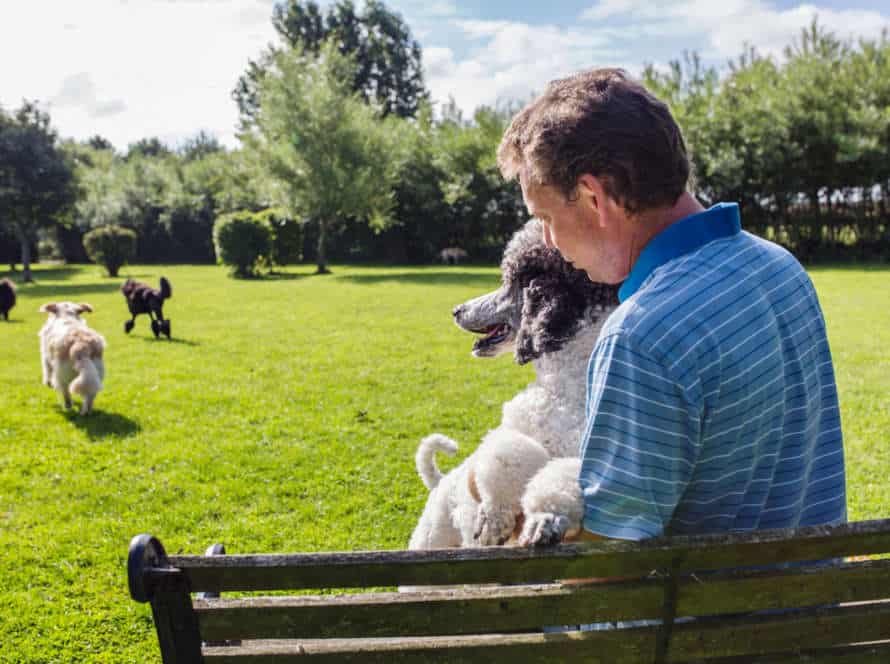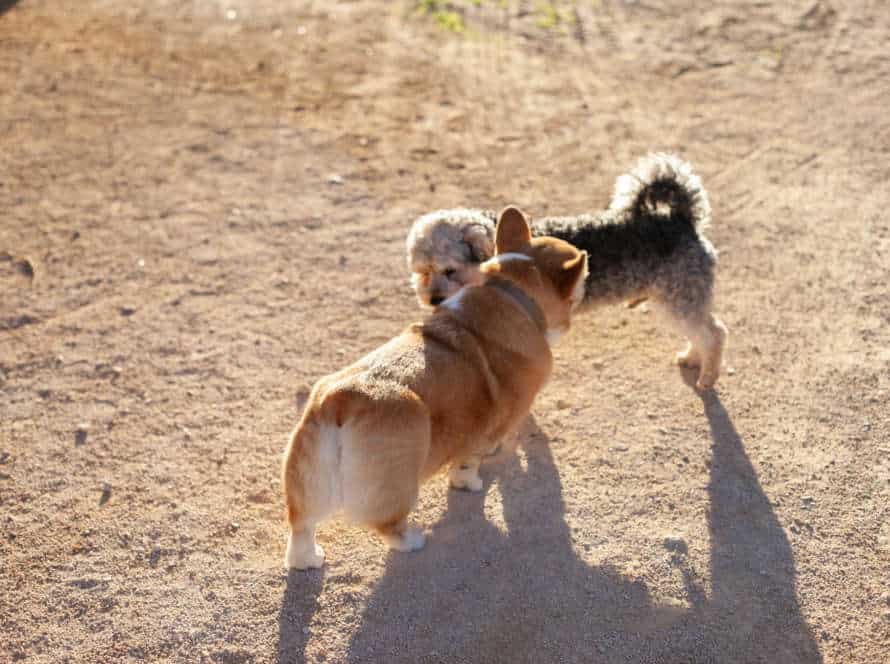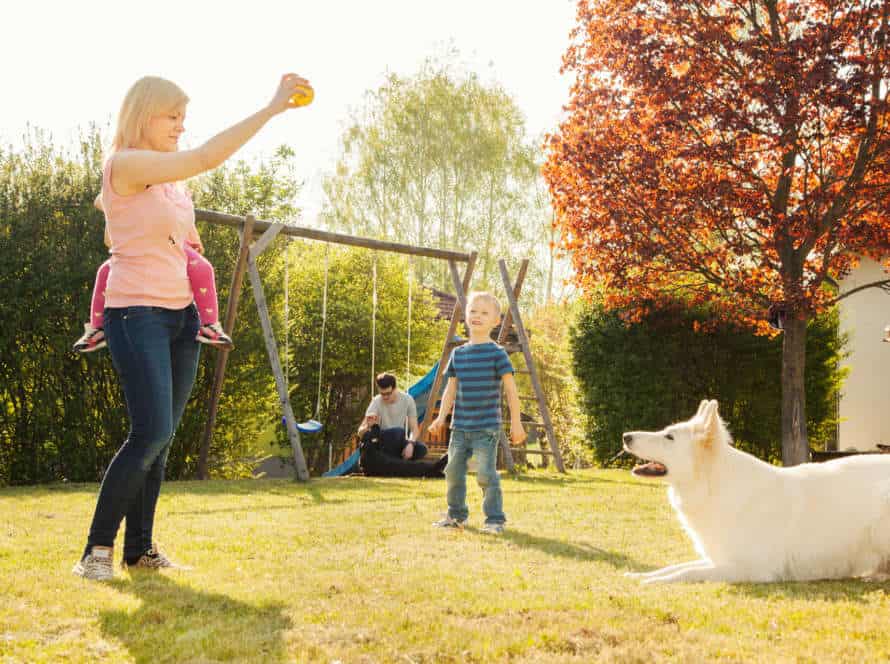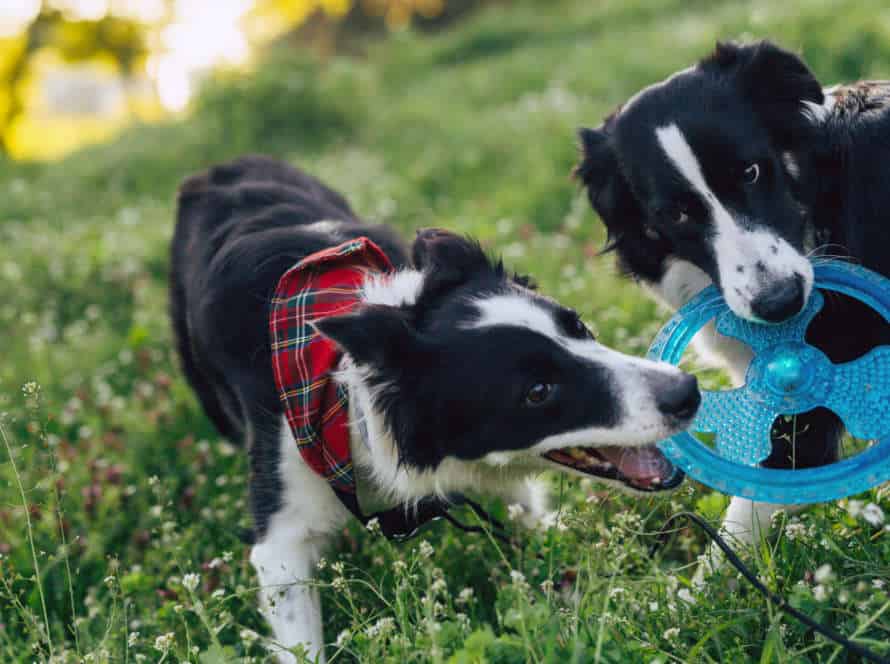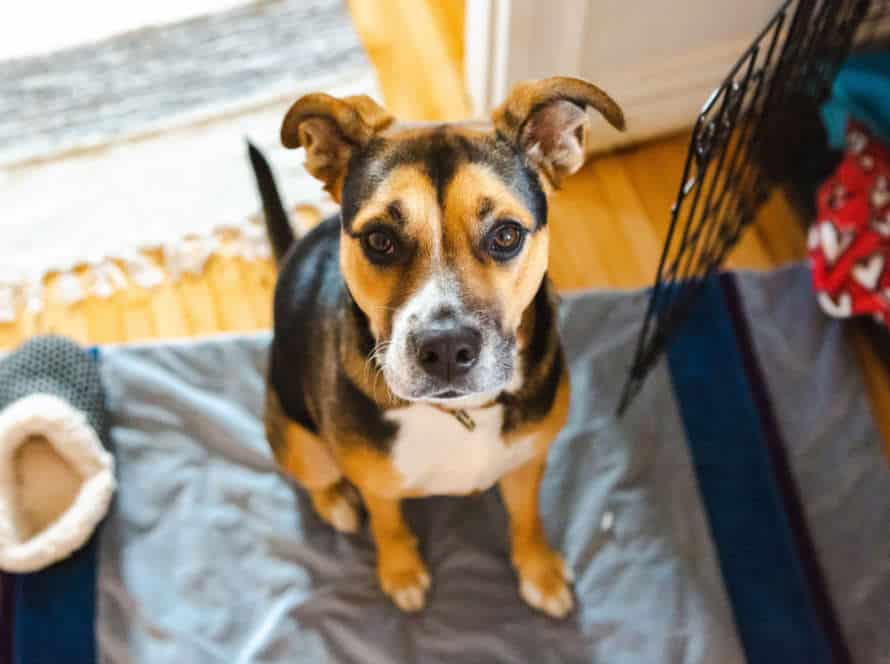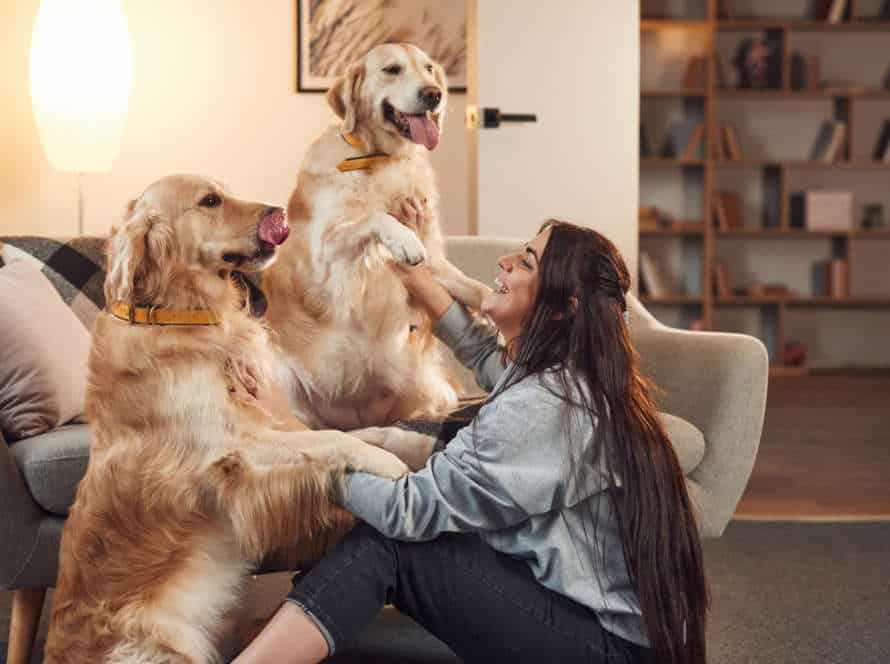Teach Your Puppy to Sit: A Key Trick for Good Manners
Teaching your pup to sit?
It’s a basic obedience exercise that helps build communication and good behaviour. Here’s how:
- Hold a treat near its tail and slowly move it up above its head.
- As it follows the treat, its butt should go down.
- Quickly say “sit” and give it the treat as a reward.
- Do this again and again, but replace the treat with a hand gesture.
- When it’s got the hang of it, practice in different places and with distractions.
Pro tip: Keep training short (10 min) and frequent (2-3x a day) for best results.
Understanding the Importance of the ‘Sit’ Command
Training your pup the ‘sit’ command is super important. It’s the basis of most basic obedience tricks. Plus, it helps to create good pup manners! It also helps to reduce unwanted jumping, barking and nipping. This article will show you how to teach your pup to ‘sit’. Also, it will explain why it is a valuable skill for them to learn.
Why the ‘Sit’ command is valuable for a well-behaved dog
The ‘Sit’ command is a must-have for a happy, well-behaved pup. It’s a basic building block for training. It helps with other commands and social situations. It gives you control over your dog’s movement and prevents them from jumping or lunging. It teaches them to greet people politely, instead of jumping on them.
Training your pup to sit is easy. Hold a treat above their nose and move it back until they sit. Then reward them with the treat.
Introducing the ‘Sit’ command is a great way to create a well-behaved dog!
Benefits of teaching the ‘Sit’ command
Teach your pup the ‘Sit‘ command for ultimate obedience and a strong connection with you. There are lots of advantages to this command.
- Firstly, it’ll help your pup learn self-control and discipline.
- Secondly, ‘Sit‘ is the basis for other commands like ‘Stay’ and ‘Come’.
- Third, it helps keep your pup safe and in control.
- Lastly, teaching your pup the ‘Sit‘ command is a fun way to bond!
Pro tip: Use treats and praises when teaching ‘Sit‘ – it encourages their behavior and strengthens your connection!
Common challenges when teaching the ‘Sit’ command
Teaching your pup the ‘Sit’ command is a key part of obedience training. But, you may face some difficulties. Here are a few of them and how to get past them:
- Puppy not focusing: Ensure your puppy is well-rested and fed before beginning training. Use treats and praises to keep them motivated and attentive.
- Not following instructions: Be consistent with the training and practise often. Always use the same verbal and hand cues when giving the “Sit” command.
- Getting up too soon: If they get up too soon, move the treat closer to their nose and slowly over their head. This’ll make them keep their eyes on the treat while sitting longer.
Remember, teaching the “Sit” command takes time, practice, and patience. With regularity and positive reinforcement, your puppy will learn this essential trick for good behaviour.
Steps to Teach Your Puppy to Sit
Teach your pup to sit? Yes! It’s essential for obedience. Not only will it make them more obedient, but it’ll also help them learn good manners. Teaching your pup to sit is easy – just follow a few steps! Here’s what you need to do:
- Get your pup’s attention
- Show them a treat
- Move the treat over their head
- Your pup will follow the treat and naturally sit down while trying to look up
- Once they sit, say “sit” and give them the treat as a reward
- Repeat this several times a day until they learn the command without the treat
Preparation for Training
Teaching your pup to sit is essential for their education. Here’s how to do it:
- Place a treat near their nose.
- Move the treat up and watch their head follow it. Their bottom should lower.
- When their bottom is on the floor, say ‘sit’ and give them the treat.
- Keep doing this with positive reinforcement.
- As you progress, slowly replace treats with praise when they sit.
Being consistent is key when training your pup. Practise ‘sit’ daily to create a strong foundation.
Choose a regular training time
Training your pup to sit on command is very important. Pick a regular training time. This will help make things consistent. Here are the steps to take:
- Choose a time that works for both of you.
- Approach it with a positive attitude. Focus on your pup.
- Put a treat near its nose, move it up towards its ears.
- As it follows, its head will tilt back and its butt will lower.
- When it sits, give it the treat and praise it with a happy voice.
- Practice daily till it masters the “sit” command.
Find a calm, quiet training location
When teaching your pup to sit, a calm and quiet training location is essential. Here are the steps to take:
- Select a place without distractions such as loud sounds or other pets.
- Make sure the area is spacious for you and your pup to move around and practice the command.
- Utilize positive reinforcement like praise or treats.
- Do the sit command often, starting from a short distance and then incrementally increasing the space between you and your pup.
- Be patient and consistent, and don’t scold or punish if they don’t get it right away.
By following these steps and finding the best training spot, you can help your pup learn to sit and better their overall behavior.
Teaching Your Puppy the ‘Sit’ Command
Teaching your pup the ‘sit’ command is a must! Here’s how:
- Start by getting their attention and show them a treat.
- Hold the treat above their head and move it towards their tail.
- They’ll want to follow the treat and sit.
- The moment they do, say ‘sit’ firmly and give them the treat.
- Do this multiple times a day in short sessions.
- With enough practice, they’ll learn to sit on command without needing a treat. This’ll help control their energy and lay the foundation for obedience training.
Lure your puppy into the ‘Sit’ position
Teaching your pup to sit is important for their learning and socialization. Follow these steps to get them to sit:
- Hold a treat close to their nose.
- Move the treat back and up.
- Their head will follow the treat, and their bottom will lower into a sit.
- Say “Sit” when their bottom is down, then give them the treat and praise them.
- Do this again, with the treat lower each time.
- Reward them when they sit without the treat.
Adding the verbal cue ‘Sit’
Train your pup to sit – this is key for good conduct and a structured day. To help your pup understand and obey, add the verbal command “Sit“. Here are the steps:
- Find a peaceful, undistracted area to train your puppy.
- Hold a treat in front of the pup’s nose and move it back towards the tail.
- As the pup follows the treat with eyes and nose, their back legs will lower to the ground.
- When pup sits, say “Sit” and give them treat.
- Do this multiple times a day, slowly stop using the treat and only use the verbal cue “Sit“.
Repeat these things consistently and patiently, and soon your pup will be sitting obediently when you give the command!
Reinforcing the ‘Sit’ Command
Reinforcing the ‘Sit’ command is essential for your pup’s obedience training. It teaches them manners and helps you be the alpha. Here’s how to do it:
- Hold a treat near their nose and move it back towards their ears.
- Say “Sit“.
- Your pup should lower their back.
- Once their back is on the ground, give them the treat and praise them.
- Repeat a few times until they respond to the command without a treat.
- Reinforce the command often and practice it in different places.
Pro Tip: Positive reinforcement, like treats and praise, is the way to go. Avoid punishment or physical force, which could hurt the trust between you.
Practice and repetition of the ‘Sit’ command
Teaching your pup to sit is super important! Follow these steps:
- Find a quiet spot in your house.
- Hold a treat and let them smell it.
- Move the treat above their head while saying “Sit”.
- If they sit, give ’em the treat and praise them.
- If not, start again from step 2.
- Practice this regularly. With consistency, they will understand “Sit” and obey it.
Pro Tip: Always reward them with treats and praises for good behaviour.
Positive reinforcement techniques for the ‘Sit’ command
Positive reinforcement is a great way to teach your puppy the ‘sit’ command. Here are two techniques you can use:
- Treats Technique: Use small, soft and delicious treats to reward your pup every time they sit. Hold the treat near their nose, move it slowly towards their back while saying ‘sit’ firmly. As soon as they sit, give them the treat and lavish them with praise. Repeat this process several times a day until your pup learns to sit without needing the treat.
- Clicker Training Technique: This technique uses a clicker to mark the desired behaviour and reward your pup for sitting. Hold the treat in front of their nose and say ‘sit’. When they sit, press the clicker and give them the treat. With repeated pairings of the click and the treat, your pup will learn that sitting means a reward. Gradually reduce the treat and rely only on clicks and praise.
Sit Training Variations
Teaching your pup to sit? It’s a must! There are a few different ways. Each has its own pros and cons. Let’s explore them! What are the variations? What are the advantages? What are the disadvantages? Let’s find out!
Different Sit Positions
Training your puppy to sit is super important. You can make it interesting by trying different sit positions. Here they are:
- Basic Sit: Stand in front of your pup. Hold a treat above their nose and say ‘sit’. Give them the treat when they do it.
- Two Paws Up: Put a stool or box in front of them. Lure them onto it and reward them with treats.
- Side Sit: Have your pup sit next to you, head facing the same direction as your legs. This helps them stay tall.
Be patient and consistent. Train for short sessions regularly for best outcomes.
‘Sit-Stay’
“Sit-Stay” is a famous puppy training command. Here are some variants to “Sit”:
- “Wait” – Get your pup’s attention and have it sit still.
- “Leave it” – Command your pup to not eat, smell, or touch something.
- “Down” – Tell your pup to lie down, instead of sitting.
- “Stay” – Ask your pup to stay seated for a longer time.
To teach your pup to sit, hold a treat near its nose, move up, and say “Sit.” When it does, reward it with a treat and some praise. Practice regularly for your pup to respond to the command.
‘Sit-Down-Sit’
Sit-Down-Sit is a great way to coach puppies. It teaches good behaviour and obedience. Here’s the plan:
- Ask your pup to sit, give them a treat.
- Guide your pup into a ‘down’ position, give them a treat.
- Ask them to sit again, give them a treat.
Do this several times. Give lots of rewards and praise. Pro Tip: Use yummy treats like cheese, cooked chicken, or freeze-dried liver to motivate your pup!
Impulse Control and Distraction Training
Impulse control and distraction training are important for teaching your puppy to sit. It’s a great way to help them be polite!
There are a few ways to do this exercise:
- Duration Sit: Ask your puppy to sit. Hold it for longer and longer each time.
- Distance Sit: Ask your pup to sit. Then, move farther away. Call them back.
- Distraction Sit: Ask your pup to sit, even with distractions around. Start small and work up.
These variations help your puppy focus and control themselves better. They’ll be a well-mannered pup!
‘Sit’ command in a noisy and distracting environment
Teaching your pup the “sit” command is vital for good behavior. However, it can be tough in a noisy and chaotic environment. Here are some tips that can assist:
- Positive reinforcement: Give treats and compliments when they sit on command to help them comprehend the behavior.
- Quiet surroundings: Begin training in a peaceful area to reduce distractions and aid your pup to concentrate.
- Increase distractions: After your pup has grasped the sit command in a tranquil spot, increase disturbances like noise, toys, and other animals or people.
- Verbal or physical sign: Create a consistent verbal or physical sign (for instance, a hand signal) to link with the “sit” command.
- Patience: Remember that training needs time and patience. Exercise frequently and commemorate progress, even if it’s small.
By using these training variations, you can teach your puppy the “sit” command in any environment, setting them up for good conduct and manners in the future.
‘Sit’ command as part of impulse control training
Teaching your pup the ‘sit’ command is essential for impulse control training & proper manners. Here are some popular variations of ‘sit’ to use:
- Basic Sit: Show treat close to pup’s nose & move towards back of head. Pup’s butt will lower, & you can say ‘sit.’ Give treat as reward.
- Sit-Stay: After pup has learned basic sit, practice by taking steps back before giving treat.
- Sit-Down: Once pup has mastered sitting, teach them to lay down by saying ‘down’ & moving treat towards ground between front paws.
Pro Tip: Practice impulse control training like ‘sit’ in short sessions throughout the day. Keep pup engaged & make training more effective!
Troubleshooting Common Issues with ‘Sit’ Training
Teaching your pup ‘sit’? Essential! But, there’s often issues. This section looks at common problems puppy owners face when teaching ‘sit’. Plus, how to fix them!
Dog is not responding to the ‘Sit’ command
If your pup isn’t listening to the “Sit” command, there could be problems you need to solve to get them in line with this important trick. Here’s what you should try:
- Be Consistent – Use the same hand signal and vocal sound each time you command them.
- No Distractions – Begin training in a quiet environment, then incorporate distractions from the real world.
- Physical Comfort – Ensure your doggo is not in pain from an injury or medical condition that makes sitting hard.
- Be Patient – Don’t anticipate perfection quickly.
By troubleshooting these issues, you can teach your pup to sit better, making your connection with them even better!
Dog gets up quickly after sitting
When a dog rises too quickly after sitting, pet owners should consider it. Here are some of the possible causes:
- Distraction – like noises or other dogs.
- Discomfort – if the dog has medical issues or hurts its legs.
- Insufficient training – perhaps it doesn’t comprehend the command or isn’t used to holding the sit position.
To sort these out, use short training sessions and cut down external distractions. Positive reinforcement like treats and verbal praise can help too.
Pro tip: Be consistent with verbal and visual cues like “sit” and a raised hand. Treats and favorite toys can also be incentive!
Dog is sitting, but not staying in the position
Is your pup sittin’ but not stayin’? Likely some issues with their “sit” trainin’. Here are common causes and how to fix ’em:
- Repetition’s not enough? They need lots of practice to learn the stuff.
- Rewards should be consistent. Positive reinforcement’s essential.
- Distractions? Dogs can be easily sidetracked. Start in a quiet place and add distractions as they advance.
By adressin’ these, you can help your pup master “sit”, plus build good behavior. Pro tip: Keep trainin’ sessions short and fun to keep ’em engaged and inspired.
Dog won’t sit without a treat incentive
If your pup won’t sit without a treat, it might be due to lack of training, distraction, boredom, or medical reasons. Here are some tips to help you train:
- Go back to basics. Use positive reinforcement – that’s clear verbal commands, hand signals, & treats.
- Reduce distractions. Choose a calm environment & eliminate noises, people, or other animals.
- Increase interaction & exercise. Playtime & exercise help your dog focus & follow commands.
- Check for health issues. If behaviour suddenly changes, or they struggle with commands, see the vet.
Training takes time & patience. Follow these tips & be consistent – you can teach your pup to sit without a treat.
Conclusion: The Value of Teaching Your Puppy to Sit.
Training your pup to sit is a must! It helps build strong connections and good behavior. Here’s why:
- Brings calm and concentration.
- Stops jumping and loud barking.
- Boosts connection and communication with the owner.
- Serves as the first step for other commands like ‘stay’ and ‘come’.
In short, teaching your pup to sit is a key skill that leads to a content and well-mannered pup.
Frequently Asked Questions
Q: When should I start teaching my puppy to sit?
A: You can start teaching your puppy to sit as early as 8 weeks old.
Q: What is the easiest way to teach my puppy to sit?
A: The easiest way to teach your puppy to sit is by using positive reinforcement, such as treats or praise.
Q: How long does it take to teach a puppy to sit?
A: It can take a few days to a few weeks for a puppy to learn how to sit, depending on their age, breed, and temperament.
Q: How many times a day should I practice sit with my puppy?
A: You should practice sit with your puppy at least 3-5 times a day, for a few minutes each time.
Q: What do I do if my puppy doesn’t want to sit?
A: If your puppy doesn’t want to sit, try using a higher-value treat or toy and make the training more fun and engaging.
Q: Does teaching my puppy to sit have any other benefits?
A: Yes, teaching your puppy to sit is a key trick for good manners and it also helps with impulse control, focus, and other obedience training exercises.


